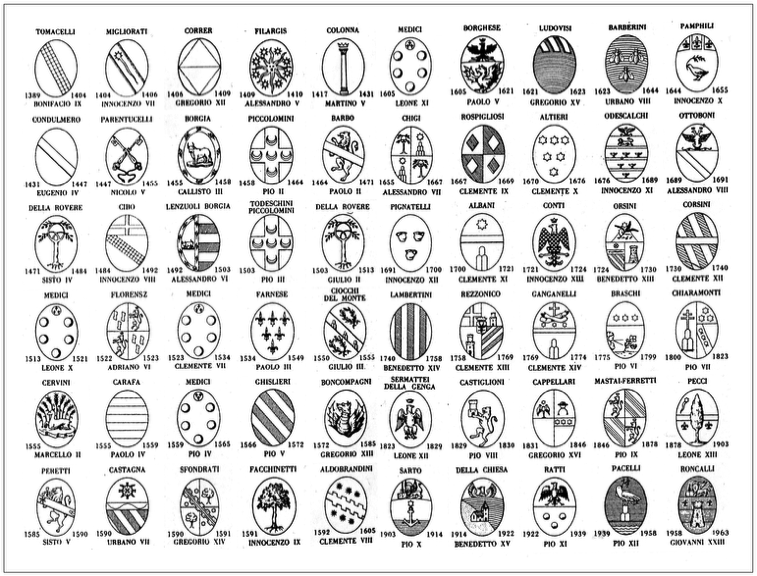It is A GAME of CODES, really. The ‘secret’ language teases. But when decoded there is a story, a history to be told identifying a family and its stature, be they papal, ecclesiastical, or noble and even with links to the likes of the Kings of France, among others. The language decoded informs history, and invariably shows itself in the form of a visual language.
A simple translation of the word stemma (singular) is, in essence, a family crest or seal. They are most often in high or low relief and attached or sculpted onto oval shaped shields. They are positioned and placed everywhere including on column capitals, bollards, tombs, in the marble pavements inside palaces, villas, churches, and outside in gardens. Stemmi (plural) often crown the top of fountains and obelisks. They can be found in the coffered ceilings in both paint and high relief as if rosettes. Stemmi are carved in travertine or marble, some in stucco (plaster), cut into wood and displayed in the ceiling decorations of villas, palazzi and churches. Once you start to notice this apparently cryptic visual information, you can start to play the game. It requires visual acuity and a good memory, but pictorial charts, especially papal ones, help a lot and are the best way to begin. Stemmi are not, though they may present themselves as such, mere decorative elements, but they are representative of a building's or monument’s patronage or a nobleman and his family’s power and wealth. They tell stories.
The 'Secret' Language: The Italian Stemma
Judith DiMaio
Adapted from a presentation at
The Seaside Pienza Institute, Pienza, Italy June 2007
"Pienza—Legacies: Continuity and Change"
Page 1
Click monogram to return to home page
(Click chart to see it really huge!)
Gli Stemmi Papale 1389–1963
Note: See page 13 for
